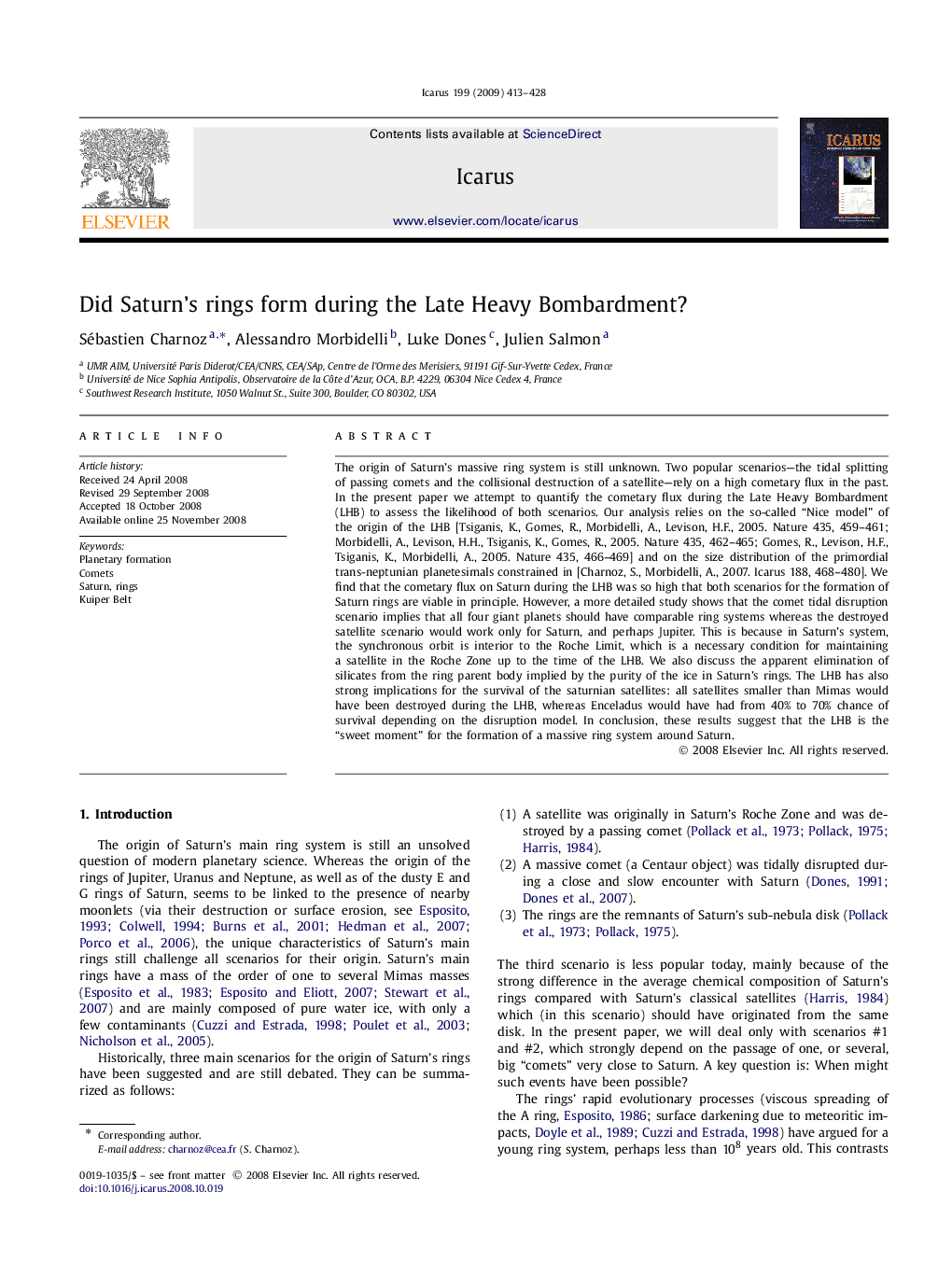| کد مقاله | کد نشریه | سال انتشار | مقاله انگلیسی | نسخه تمام متن |
|---|---|---|---|---|
| 1775541 | 1021197 | 2009 | 16 صفحه PDF | دانلود رایگان |
عنوان انگلیسی مقاله ISI
Did Saturn's rings form during the Late Heavy Bombardment?
دانلود مقاله + سفارش ترجمه
دانلود مقاله ISI انگلیسی
رایگان برای ایرانیان
کلمات کلیدی
موضوعات مرتبط
مهندسی و علوم پایه
علوم زمین و سیارات
علوم فضا و نجوم
پیش نمایش صفحه اول مقاله

چکیده انگلیسی
The origin of Saturn's massive ring system is still unknown. Two popular scenarios-the tidal splitting of passing comets and the collisional destruction of a satellite-rely on a high cometary flux in the past. In the present paper we attempt to quantify the cometary flux during the Late Heavy Bombardment (LHB) to assess the likelihood of both scenarios. Our analysis relies on the so-called “Nice model” of the origin of the LHB [Tsiganis, K., Gomes, R., Morbidelli, A., Levison, H.F., 2005. Nature 435, 459-461; Morbidelli, A., Levison, H.H., Tsiganis, K., Gomes, R., 2005. Nature 435, 462-465; Gomes, R., Levison, H.F., Tsiganis, K., Morbidelli, A., 2005. Nature 435, 466-469] and on the size distribution of the primordial trans-neptunian planetesimals constrained in [Charnoz, S., Morbidelli, A., 2007. Icarus 188, 468-480]. We find that the cometary flux on Saturn during the LHB was so high that both scenarios for the formation of Saturn rings are viable in principle. However, a more detailed study shows that the comet tidal disruption scenario implies that all four giant planets should have comparable ring systems whereas the destroyed satellite scenario would work only for Saturn, and perhaps Jupiter. This is because in Saturn's system, the synchronous orbit is interior to the Roche Limit, which is a necessary condition for maintaining a satellite in the Roche Zone up to the time of the LHB. We also discuss the apparent elimination of silicates from the ring parent body implied by the purity of the ice in Saturn's rings. The LHB has also strong implications for the survival of the saturnian satellites: all satellites smaller than Mimas would have been destroyed during the LHB, whereas Enceladus would have had from 40% to 70% chance of survival depending on the disruption model. In conclusion, these results suggest that the LHB is the “sweet moment” for the formation of a massive ring system around Saturn.
ناشر
Database: Elsevier - ScienceDirect (ساینس دایرکت)
Journal: Icarus - Volume 199, Issue 2, February 2009, Pages 413-428
Journal: Icarus - Volume 199, Issue 2, February 2009, Pages 413-428
نویسندگان
Sébastien Charnoz, Alessandro Morbidelli, Luke Dones, Julien Salmon,